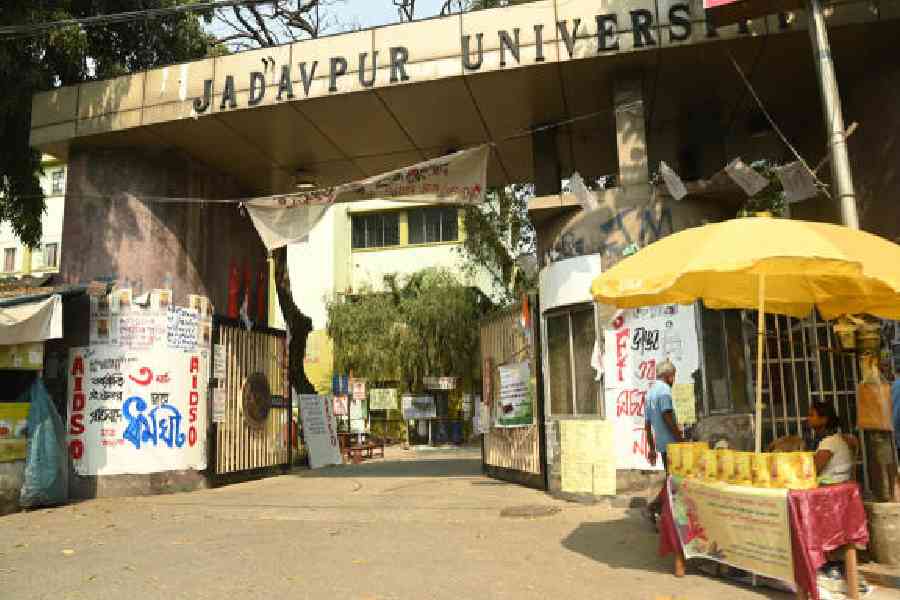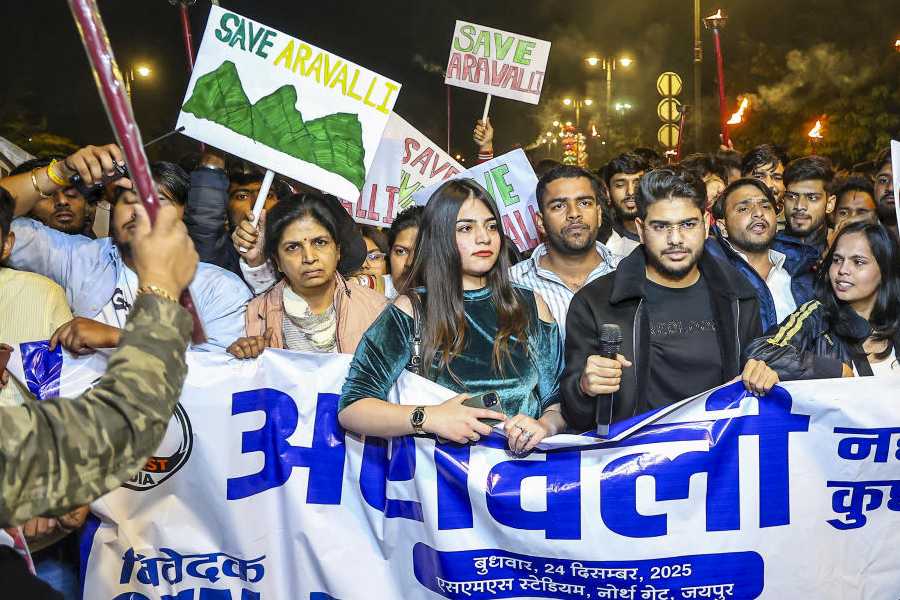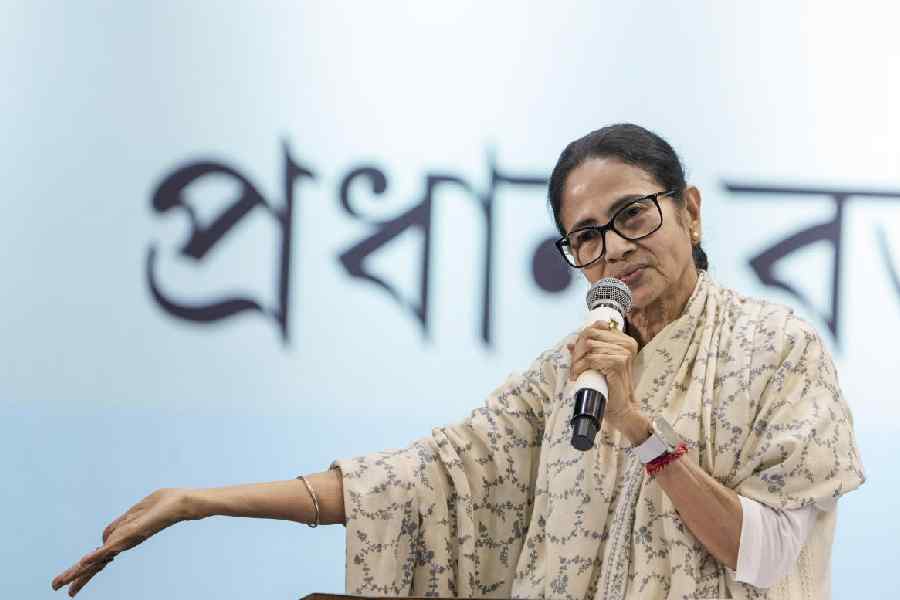 |
| Tezpur University. Telegraph picture |
Tezpur University was a riot of colours at the 27th Inter-University Youth Festival for the east zone, UNIFEST-2011, organised by the Association of Indian Universities (AIU) on its campus at Napaam, on the outskirts of Tezpur in Sonitpur district from December 16 to 20.
More than 550 participants from 19 universities from across the east zone took part in 22 events under different categories, including music, dance, drama, literary events and the fine arts. The participants came from Odisha, West Bengal, Bihar, Jharkhand, Uttar Pradesh, Chhattisgarh, Sikkim and the northeastern states.
Vice-chancellor of Tezpur University M.K. Chaudhuri called upon the youths to imbibe a spirit of true championship through participation in various events as “everyone would be a winner and none would lose”.
Welcoming the participating teams, chairman of the organising committee and pro vice-chancellor of Tezpur University Amarjyoti Choudhury described the youngsters as the symbol of energy and appealed to them to utilise their energy in positive ways, which would contribute to nation building.
The festival began with hoisting the AIU flag and the Tezpur University flag by Ranjan Roy and Amarjyoti Choudhury respectively. It was followed by a colourful cultural procession by the participating universities in which they depicted the culture and tradition of their respective states. Four pigeons symbolising peace and love were released on this occasion.
Under five categories (music, dance, drama, literary events and fine arts), 24 events were thrown open for contest.
The serene and pollution-free campus of the university impressed the participants. The establishment of Tezpur University is considered to be one of the outcomes of the historic Assam Accord.
The university was established by an act of Parliament in 1994. The then Prime Minister P.V. Narasimha Rao inaugurated the university.
Initially, the university operated from the premises of Darrang College in Tezpur. Later, land was acquired at Napaam, on the outskirts of Tezpur. The university has five boys’ hostels and five girls’ hostels equipped with all modern facilities for a comfortable accommodation. Even married scholars stay in the university hostel.
Tezpur University is the first university in the country to offer a master’s degree in computational seismology and also one of the few universities in India to have its own department of energy.
The university offers various under-graduate, post-graduate and doctoral programmes in academic divisions of school of science and technology, school of humanities and social sciences, school of management sciences and school of engineering.
The glittering valedictory function-cum-prize distribution ceremony was held on December 20 at Kalaguru Bishnuprasad Rabha auditorium. The function was studded with popular performances most of which were by gold medalists, apart from the traditional and cultural presentations by Tezpur University students.
Thunderous cheers rent the auditorium during the prize distribution ceremony when the host institution was announced the champion with five gold, four silver and three bronze medals.
Banaras Hindu University, Varanasi, were the runners-up.
Search for creative classroom
Amarjyoti Choudhury, pro vice-chancellor, Tezpur University
 |
The first lesson that a classroom teaches us is to plan. Without a comprehensive plan, even the best of teachers may fail to connect. The recipe is to draft a learning goal for each class. The concepts are the kings of classrooms. Identifying and addressing these kings are the primary responsibility of a teacher. Raw concepts are, however, often difficult. It is for teachers to dress them in attire which students can immediately relate to. Examples of day-to-day life, wit and humour and creative use of student psychology, too, can finally add to the process of understanding by inviting further concentration. Solution of realistic problems or assignments often makes the teaching-learning process doubly meaningful.
A classroom with good ambience enhances concentration. Audio-visual aids, graphs in transparencies also tell stories rich in content. Experiments performed in classroom also firm up concepts. But the best way is definitely to assure a two-way dialogue. Indeed, the main aim of classroom is to connect the teacher and the taught. Interaction in cordial ambience through questions and answers can creatively assure a direct contact. Presentation of certain parts of the syllabus by groups of students may also be exploited as a two-way dialogue. Only a comprehensive scheme of these classroom exploits can light up the mind to transcend to greater heights.
GLANCE
Cyber fest
The IT department of South Point School organised its annual inter-school cyberfest 2011 on the school premises on December 20. Students from 12 city schools competed for top honours in seven categories, including IT quiz, IT debate, web page designing, movie making, X-treme typing and gaming.
Seminar
Darrang College, in collaboration with IGNOU Study Centre, will organise a UGC- sponsored national seminar on the role of distance education in socio-economic development of Assam on the college premises on January 20 and 21. Education minister Himanta Biswa Sarma will inaugurate the seminar.
New courses
A number of subject-based refresher courses will be run by the Academic Staff College, Gauhati University, during the first quarter of 2012. A refresher course in history will be organised from January 23 to February 12 on historiography and sources of history.
Students’ programme
Cambridge International School, Guwahati organised a students’ exchange programme, The Confluence, 2011 with Jay International School, Rajkot on the school premises. The programme concluded on December 21.
Lecture
The department of economics, Pragjyotish College, organised the 5th Bhabananda Deka memorial lecture at the college premises on December 23. The lecture was delivered by Saundarjya Borbora, a faculty member of IIT Guwahati on Financial Inclusion and Northeast India.











